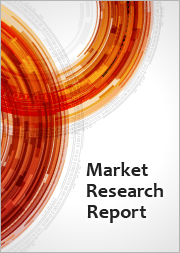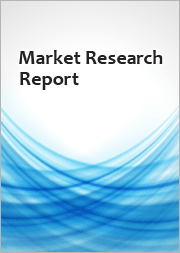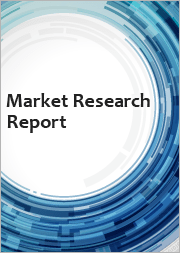
|
시장보고서
상품코드
1675414
폐암 치료 시장 : 요법별, 암 유형별, 유통 채널별, 지역별(2025-2033년)Lung Cancer Therapeutics Market Report by Therapy, Cancer Type (Non-Small Cell Lung Cancer, Small Cell Lung Cancer ), Distribution Channel, and Region 2025-2033 |
||||||
세계의 폐암 치료 시장 규모는 2024년에 330억 6,100만 달러에 달했습니다. 향후 IMARC Group은 2033년에 726억 1,070만 달러에 달하며, 2025-2033년의 성장률(CAGR)은 9.14%에 달할 것으로 예측하고 있습니다. 이 시장은 세계에서 흡연 및 환경오염에 의한 폐암 이환율의 급증, 유전자 프로파일에 기반한 치료 등 개별화 치료의 새로운 개발, 병태의 조기 발견을 위한 진단 기술의 지속적인 진보 등에 의해 꾸준한 성장을 달성하고 있습니다.
폐암 치료 시장 분석 :
주요 시장 성장 촉진요인: 전 세계 폐암의 높은 발병률과 사망률이 높은 수요를 창출하고 있습니다.
주요 시장 동향 : 종양 세포내 특정 유전자 변이에 대응하는 치료법이 증가함에 따라 시장은 개인맞춤형 의료의 방향으로 발전할 것입니다. 또한 AI와 머신러닝을 진단 과정에 도입하여 이러한 치료법에 대한 접근 기회와 정확성을 높이는 것도 주요 폐암 치료 시장 동향 중 하나로 작용하고 있습니다.
지역적 동향 : 시장 분석에 따르면 북미는 탄탄한 의료 구조, 의료비, 첨단 종양학 치료의 조기 활용으로 인해 폐암 치료 시장을 선도하고 있습니다. 중국과 인도를 포함한 아시아태평양은 의료 인식의 급속한 증가와 의료 제공 체계의 개선으로 시장을 주도하고 있습니다.
경쟁상황: 폐암치료제 시장 개요에 따르면 시장은 전통 있는 대형 제약회사와 신생 바이오기업의 존재로 인해 경쟁이 치열합니다. 또한 주요 기업은 연구개발 및 제휴를 통해 제품 라인의 혁신과 확장을 위해 노력하고 있습니다.
과제와 기회: 중저소득 국가에 폐암 치료제의 보급을 가로막는 주요 요인으로 신약의 고가성이 부각되면서 접근성 격차가 발생하고 있습니다. 그러나 최근 비용 효율적인 제네릭 의약품과 바이오시밀러 개발이 활발해지면서 이러한 문제는 더욱 증폭되고 있습니다.
폐암 치료 시장 동향 :
세계 폐암 발병률 증가
폐암 치료 시장의 성장에 기여하는 또 다른 요인은 폐암 발병률 증가입니다. 미국 암학회는 2024년까지 미국에서 폐암이 발생할 것으로 추정하고 있습니다. 새로 발생하는 암 환자 수는 남성 116,310명, 여성 118,270명 등 234,580명입니다. 사망자 수는 125,070명(남성 65,790명, 여성 59,280명)입니다. 이는 세계 인구의 급격한 증가와 흡연, 대기오염, 환경오염, 직장내 유해한 사건 등 폐암을 유발하는 유해인자의 만연으로 지원되고 있습니다. 따라서 이는 폐암 치료 시장의 통계에도 영향을 미치고 있습니다. 폐암 발병률은 지속적으로 증가하고 있으며, 보다 적극적인 대책이 필요합니다. 이에 따라 폐암 치료를 위한 약물을 포함한 방법의 개발 및 개선은 지속적으로 발전하고 있습니다. 공급량 증가는 제약회사에게 시험과 신규 개발, 제품군을 확대하는 이유가 됩니다. 이에 따라 보다 효과적인 약물에 대한 수요도 증가하고 있습니다. 따라서 폐암 치료는 가장 빠르게 성장하고 있습니다.
맞춤형 의료의 혁신
폐암 치료 시장의 성장은 유전적 특성에 따라 환자 개개인을 치료하는 맞춤의료의 발달로 크게 성장하고 있습니다. 최근 제약업계는 이러한 돌연변이를 정확하게 공격하는 약물을 개발 및 생산하고 있습니다. 이들은 화학요법보다 효과가 높고 부작용이 적은 것으로 입증되고 있습니다. 폐암 치료 시장 예측은 맞춤형 의료가 이 종양학 치료의 기초가 될 것임을 시사합니다. 또한 정밀의료의 중요성이 강조되는 배경에는 진단의 기술적 진보와 폐암의 진행에 영향을 미치는 유전적 요인에 대한 이해가 깊어지고 있는 것이 있습니다. 그 결과, 제약업계는 개인 맞춤형 솔루션에 대한 투자를 지속적으로 확대하여 의약품 개발을 특정 환자의 요구에 맞게 조정함으로써 폐암 치료 시장을 크게 발전시키고 있습니다.
진단과 치료의 끊임없는 발전
기술 혁신은 특히 진단 및 치료 제공에서 시장을 주도하고 있습니다. 또한 영상 진단 및 AI 지원 진단 툴의 개선으로 폐암을 조기에 정확하게 발견할 수 있게 되었습니다. 이와 함께 이 개념은 치료 효과와 환자 회복에 있으며, 획기적인 개념입니다. 이와는 별도로, 폐암 치료 시장의 최근 동향에는 새로 개발된 최소침습 수술 기술의 도입, 강화된 방사선 치료 접근법, 나노입자 기반 화학요법 제제를 포함한 첨단 약물전달 시스템 등이 포함됩니다. 또한 첨단 기술의 정확성과 효과, 편안한 치료와 회복 가능한 환자의 시야는 상상할 수 없을 정도입니다. 또한 이러한 모든 기술의 조합은 긍정적인 시장 전망을 만들어 내고 있습니다.
목차
제1장 서문
제2장 조사 범위와 조사 방법
- 조사의 목적
- 이해관계자
- 데이터 소스
- 1차 정보
- 2차 정보
- 시장 추정
- 보텀업 어프로치
- 톱다운 어프로치
- 조사 방법
제3장 개요
제4장 서론
- 개요
- 주요 업계 동향
제5장 세계의 폐암 치료 시장
- 시장 개요
- 시장 실적
- COVID-19의 영향
- 시장 예측
제6장 시장 내역 : 요법별
- 표적치료
- 주요 부문
- Bevacizumab
- Dabrafenib/Trametinib
- Erlotinib Hydrochloride
- Osimertinib
- 기타
- 주요 부문
- 면역치료
- 주요 부문
- 더발루맙
- 니볼루맙
- 아테졸리주맙
- 펨브로리주맙
- 주요 부문
- 방사선 요법
- 주요 부문
- 외부 빔
- 내부 빔
- 전신
- 주요 부문
- 화학요법
제7장 시장 내역 : 암 유형별
- 비소세포 폐암(NSCLC)
- 소세포 폐암(SCLC)
제8장 시장 내역 : 유통 채널별
- 병원 약국
- 소매 약국
- 온라인 약국
- 기타
제9장 시장 내역 : 지역별
- 북미
- 미국
- 캐나다
- 아시아태평양
- 중국
- 일본
- 인도
- 한국
- 호주
- 인도네시아
- 기타
- 유럽
- 독일
- 프랑스
- 영국
- 이탈리아
- 스페인
- 러시아
- 기타
- 라틴아메리카
- 브라질
- 멕시코
- 기타
- 중동 및 아프리카
- 시장 내역 : 국가별
제10장 촉진요인·억제요인·기회
- 개요
- 촉진요인
- 억제요인
- 기회
제11장 밸류체인 분석
제12장 Porter's Five Forces 분석
- 개요
- 바이어의 교섭력
- 공급 기업의 교섭력
- 경쟁의 정도
- 신규 진출업체의 위협
- 대체품의 위협
제13장 가격 분석
제14장 경쟁 구도
- 시장 구조
- 주요 기업
- 주요 기업의 개요
- AbbVie Inc.
- Amgen Inc.
- AstraZeneca Plc
- Boehringer Ingelheim International GmbH
- Bristol-Myers Squibb Company
- Daiichi Sankyo Company Limited
- Eli Lilly and Company
- GSK PLC
- Merck & Co. Inc.
- Novartis AG
- Pfizer Inc.
- Roche Holding AG
- Takeda Pharmaceutical Company Limited
The global lung cancer therapeutics market size reached USD 33,061.0 Million in 2024. Looking forward, IMARC Group expects the market to reach USD 72,610.7 Million by 2033, exhibiting a growth rate (CAGR) of 9.14% during 2025-2033. The market is experiencing steady growth driven by the rapid increase in the incidence of lung cancer, which is aggravated by smoking and environmental pollution around the world, the further development of individualized treatment, including based on the gene profile, and the continuous advancement of technology for diagnosing the disease, to ensure early detection of the pathology.
Lung Cancer Therapeutics Market Analysis:
Major Market Drivers: The massive prevalence and mortality associated with lung cancer worldwide is creating a high lung cancer therapeutics market demand.
Key Market Trends: The market will develop in the direction of personalized medicine as an increasing number of therapies addressing particular genetic mutations in tumor cells are created. Additionally, the incorporation of AI and machine learning in the diagnostic processes enhancing the chances and precision of accessing such treatments is acting as one of the major lung cancer therapeutics market trends.
Geographical Trends: The market analysis states that North America leads the market regarding lung cancer therapeutics due to the robust healthcare structures, health expenditures, and early use of advanced oncology treatments. Asia Pacific region, including China and India, is driving the market based on rapidly growing healthcare awareness and improved healthcare delivery systems.
Competitive Landscape: According to the lung cancer therapeutics market overview, the market is highly competitive based on the existence of well-established pharmaceutical giants and new emerging biofirms. Additionally, major companies are innovating and expanding their product lines through research and development and partnerships.
Challenges and Opportunities: The high cost of new cancer medicines emerges as the main challenge to the lung cancer therapeutics revelations to the low- and middle-income economies, creating accessibility gaps. However, such challenges amplify as lung cancer therapeutics market recent opportunities for developing cost-effective generics and biosimilars.
Lung Cancer Therapeutics Market Trends:
Rising incidence of lung cancer worldwide
Another factor contributing to the lung cancer therapeutics market growth is the increasing incidence of lung cancer. The American Cancer Society made an estimation of lung cancer in the US by 2024. The number of new cancer occurrences should approximately equal 234,580 individuals, including 116,310 males and 118,270 females. The number of deaths will equal 125,070 deaths, which involves 65,790 male deaths and 59,280 female deaths. This can be supported by the exponentially growing global population and the prevalence of harmful factors causing lung cancer such as smoking, air and environmental pollution, and harmful workplace events. Thus, this is also influencing the lung cancer therapeutics market statistics. Due to the constantly increasing incidence of lung cancer, more active measures are needed. Accordingly, the development and improvement of methods, including drugs, for lung cancer treatment are constantly developing. Increased supply creates more reason for pharmaceutical companies to conduct tests and develop new ones and expand their assortment. Accordingly, demand for more effective drugs is growing. Thus, lung cancer therapeutics is the fastest-growing.
Innovations in personalized medicine
The lung cancer therapeutics market growth is increasing significantly with the development of personalized medicine, which treats each patient based on genetic features. In recent years, the drug industry has developed and produced drugs that precisely attack such mutations. These have proven to be more effective than chemotherapy, causing fewer side effects. The lung cancer therapeutics market forecast suggests that personalized medicine will become the basis of therapy for this oncology; this means an increase in the efficiency of therapy since the prescription will be more accurate. Furthermore, the growing emphasis on precision medicine is fueled by technological progress in diagnostics and an increased understanding of genetic factors influencing lung cancer progression. Consequently, the pharmaceutical industry's investment in personalized solutions continues to expand, aligning drug development with specific patient needs and substantially driving the lung cancer therapeutics market forward.
Continuous advancements in diagnostics and treatment
Technological innovations drive the market, particularly in diagnostics and treatment delivery. In addition, improved imaging and AI-assisted diagnostic tools allow lung cancer detection early and more accurately. Along with this, this notion is a game-changer for treatment efficacy and patient recovery. Apart from this, the lung cancer therapeutics market recent developments include the introduction of new and developing minimally invasive surgery techniques, enhanced radiation treatment approaches, and advanced drug-delivery systems, including nanoparticle-based chemo preparations. In addition, the accuracy and effectiveness of advanced technology cannot imagine a comfortable treatment and recoverable patient view. Furthermore, the combination of all these technologies is creating a positive market outlook.
Lung Cancer Therapeutics Market Segmentation:
Breakup by Therapy:
- Targeted Therapy
- Bevacizumab
- Dabrafenib/Trametinib
- Erlotinib Hydrochloride
- Osimertinib
- Others
- Immunotherapy
- Durvalumab
- Nivolumab
- Atezolizumab
- Pembrolizumab
- Radiation Therapy
- External Beam
- Internal Beam
- Systemic
- Chemotherapy
Targeted therapy accounts for the majority of the market share
The therapy segment is the largest as it is more efficient and has fewer side effects compared to traditional chemotherapy. It includes drugs or other materials that can accurately recognize and kill cancer cells. This treatment is probably directed at the molecular and genetic features that differentiate cancer cells from others. In addition, the current level of understanding of genetic aspects of lung cancer allows the identification of many specific molecular targets and, correspondingly, agents that can prevent the activation of these targets. According to the lung cancer therapeutics market forecast, the development of molecular biology and genetics will consistently increase the number of targets and agents that could be used to combat the described disease. Hence, it is reasonable to suppose that the targeted therapy segment will continue developing due to the appearance of new potential targets and agents.
Breakup by Cancer Type:
- Non-Small Cell Lung Cancer (NSCLC)
- Small Cell Lung Cancer (SCLC)
Non-Small Cell Lung Cancer (NSCLC) holds the largest share of the industry
The non-small cell lung cancer segment holds the largest share in the market due to its high prevalence. Individually, the subtypes share pathological variations, but they progress more slowly than small-cell lung cancer. As such, the high global prevalence of NSCLC creates a sizable lung cancer therapeutics market demand for the different subtypes, thereby incentivizing pharmaceutical companies and researchers to focus on developing therapies and immunotherapies that can treat the subtype gene and molecular distinctions effectively. In addition, the changing molecular pathogenesis capacity for NSCLC also ensures that the development of precision medicine causes NSCLC to have a correlation with the market.
Breakup by Distribution Channel:
- Hospital Pharmacies
- Retail Pharmacies
- Online Pharmacies
- Other
Hospital pharmacies represents the leading market segment
Hospital pharmacies are the largest channel of distribution in the lung cancer therapeutics segment due to the complicated and advanced nature of the therapies for the disease. Doctors require a controlled environment to administer treatments, including chemotherapy solutions, which need to be carefully regulated to avoid side effects. According to the lung cancer therapeutics market analysis, most lung cancer therapies are for inpatients given the need for complex therapies such as chemotherapy, targeted therapy, and immunotherapies According to the lung cancer therapeutics market analysis, most lung cancer therapies are for inpatients given the need for complex therapies such as chemotherapy, targeted therapy, and immunotherapies. Additionally, hospital pharmacies are critical in facilitating integrated lung cancer care as the patient can access all the required treatments immediately and from the same hospital that can coordinate oncology, surgery, and radiology departments. Apart from this, the centralization of centrality ensures the patient undergoes therapy with minimal delays which improves the effectiveness of the therapeutics. Furthermore, the demand for infrastructure and personnel expertise is increasing the lung cancer therapeutics market revenue.
Breakup by Region:
- North America
- United States
- Canada
- Asia-Pacific
- China
- Japan
- India
- South Korea
- Australia
- Indonesia
- Others
- Europe
- Germany
- France
- United Kingdom
- Italy
- Spain
- Russia
- Others
- Latin America
- Brazil
- Mexico
- Others
- Middle East and Africa
North America leads the market, accounting for the largest lung cancer therapeutics market share
The report has also provided a comprehensive analysis of all the major regional markets, which include North America (the United States and Canada); Asia Pacific (China, Japan, India, South Korea, Australia, Indonesia, and others); Europe (Germany, France, the United Kingdom, Italy, Spain, Russia, and others); Latin America (Brazil, Mexico, and others); and the Middle East and Africa. According to the report, North America represents the largest regional market for lung cancer therapeutics.
North America has the largest regional lung cancer therapeutics market share due to high disease prevalence, advanced healthcare infrastructure, and one of the highest healthcare spender factors. Along with this, high government contribution and private sector support in the US and Eurozone countries, spent on research and development, also play a key role in the growth of the North American market. Furthermore, the accelerating investments to develop technologies and initiatives to diagnose and treat lung cancer are influencing lung cancer therapeutics market revenue positively. As the lung cancer therapeutics market growth trend shows, in the past decade, various targeted therapies and immunotherapies have been developed and used in the treatment of lung cancer. Furthermore, the regulatory environment across the region also has a friendly policy of fast-track cancer drugs. Moreover, the high levels of patient awareness across the region, and insurance coverage ensures North America continues to dictate the global market.
Competitive Landscape:
The market research report has also provided a comprehensive analysis of the competitive landscape in the market. Detailed profiles of all major companies have also been provided. Some of the major market players in the lung cancer therapeutics industry include:
- AbbVie Inc.
- Amgen Inc.
- AstraZeneca Plc
- Boehringer Ingelheim International GmbH
- Bristol-Myers Squibb Company
- Daiichi Sankyo Company Limited
- Eli Lilly and Company
- GSK PLC
- Merck & Co. Inc.
- Novartis AG
- Pfizer Inc.
- Roche Holding AG
- Takeda Pharmaceutical Company Limited
Key Questions Answered in This Report:
- How has the global lung cancer therapeutics market performed so far, and how will it perform in the coming years?
- What are the drivers, restraints, and opportunities in the global lung cancer therapeutics market?
- What is the impact of each driver, restraint, and opportunity on the global lung cancer therapeutics market?
- What are the key regional markets?
- Which countries represent the most attractive lung cancer therapeutics market?
- What is the breakup of the market based on the therapy?
- Which is the most attractive therapy in the lung cancer therapeutics market?
- What is the breakup of the market based on the cancer type?
- Which is the most attractive cancer type in the lung cancer therapeutics market?
- What is the breakup of the market based on the distribution channel?
- Which is the most attractive distribution channel in the lung cancer therapeutics market?
- What is the competitive structure of the market?
- Who are the key players/companies in the global lung cancer therapeutics market?
Table of Contents
1 Preface
2 Scope and Methodology
- 2.1 Objectives of the Study
- 2.2 Stakeholders
- 2.3 Data Sources
- 2.3.1 Primary Sources
- 2.3.2 Secondary Sources
- 2.4 Market Estimation
- 2.4.1 Bottom-Up Approach
- 2.4.2 Top-Down Approach
- 2.5 Forecasting Methodology
3 Executive Summary
4 Introduction
- 4.1 Overview
- 4.2 Key Industry Trends
5 Global Lung Cancer Therapeutics Market
- 5.1 Market Overview
- 5.2 Market Performance
- 5.3 Impact of COVID-19
- 5.4 Market Forecast
6 Market Breakup by Therapy
- 6.1 Targeted Therapy
- 6.1.1 Market Trends
- 6.1.2 Key Segments
- 6.1.2.1 Bevacizumab
- 6.1.2.2 Dabrafenib/Trametinib
- 6.1.2.3 Erlotinib Hydrochloride
- 6.1.2.4 Osimertinib
- 6.1.2.4 Others
- 6.1.2 Market Forecast
- 6.2 Immunotherapy
- 6.2.1 Market Trends
- 6.2.2 Key Segments
- 6.2.2.1 Durvalumab
- 6.2.2.2 Nivolumab
- 6.2.2.3 Atezolizumab
- 6.2.2.4 Pembrolizumab
- 6.2.2 Market Forecast
- 6.3 Radiation Therapy
- 6.3.1 Market Trends
- 6.3.2 Key Segment
- 6.3.2.1 External Beam
- 6.3.2.2 Internal Beam
- 6.3.2.3 Systemic
- 6.3.2 Market Forecast
- 6.4 Chemotherapy
- 6.4.1 Market Trends
- 6.4.2 Market Forecast
7 Market Breakup by Cancer Type
- 7.1 Non-small Cell Lung Cancer (NSCLC)
- 7.1.1 Market Trends
- 7.1.2 Market Forecast
- 7.2 Small Cell Lung Cancer (SCLC)
- 7.2.1 Market Trends
- 7.2.2 Market Forecast
8 Market Breakup by Distribution Channel
- 8.1 Hospital Pharmacies
- 8.1.1 Market Trends
- 8.1.2 Market Forecast
- 8.2 Retail Pharmacies
- 8.2.1 Market Trends
- 8.2.2 Market Forecast
- 8.3 Online Pharmacies
- 8.3.1 Market Trends
- 8.3.2 Market Forecast
- 8.4 Others
- 8.4.1 Market Trends
- 8.4.2 Market Forecast
9 Market Breakup by Region
- 9.1 North America
- 9.1.1 United States
- 9.1.1.1 Market Trends
- 9.1.1.2 Market Forecast
- 9.1.2 Canada
- 9.1.2.1 Market Trends
- 9.1.2.2 Market Forecast
- 9.1.1 United States
- 9.2 Asia-Pacific
- 9.2.1 China
- 9.2.1.1 Market Trends
- 9.2.1.2 Market Forecast
- 9.2.2 Japan
- 9.2.2.1 Market Trends
- 9.2.2.2 Market Forecast
- 9.2.3 India
- 9.2.3.1 Market Trends
- 9.2.3.2 Market Forecast
- 9.2.4 South Korea
- 9.2.4.1 Market Trends
- 9.2.4.2 Market Forecast
- 9.2.5 Australia
- 9.2.5.1 Market Trends
- 9.2.5.2 Market Forecast
- 9.2.6 Indonesia
- 9.2.6.1 Market Trends
- 9.2.6.2 Market Forecast
- 9.2.7 Others
- 9.2.7.1 Market Trends
- 9.2.7.2 Market Forecast
- 9.2.1 China
- 9.3 Europe
- 9.3.1 Germany
- 9.3.1.1 Market Trends
- 9.3.1.2 Market Forecast
- 9.3.2 France
- 9.3.2.1 Market Trends
- 9.3.2.2 Market Forecast
- 9.3.3 United Kingdom
- 9.3.3.1 Market Trends
- 9.3.3.2 Market Forecast
- 9.3.4 Italy
- 9.3.4.1 Market Trends
- 9.3.4.2 Market Forecast
- 9.3.5 Spain
- 9.3.5.1 Market Trends
- 9.3.5.2 Market Forecast
- 9.3.6 Russia
- 9.3.6.1 Market Trends
- 9.3.6.2 Market Forecast
- 9.3.7 Others
- 9.3.7.1 Market Trends
- 9.3.7.2 Market Forecast
- 9.3.1 Germany
- 9.4 Latin America
- 9.4.1 Brazil
- 9.4.1.1 Market Trends
- 9.4.1.2 Market Forecast
- 9.4.2 Mexico
- 9.4.2.1 Market Trends
- 9.4.2.2 Market Forecast
- 9.4.3 Others
- 9.4.3.1 Market Trends
- 9.4.3.2 Market Forecast
- 9.4.1 Brazil
- 9.5 Middle East and Africa
- 9.5.1 Market Trends
- 9.5.2 Market Breakup by Country
- 9.5.3 Market Forecast
10 Drivers, Restraints, and Opportunities
- 10.1 Overview
- 10.2 Drivers
- 10.3 Restraints
- 10.4 Opportunities
11 Value Chain Analysis
12 Porters Five Forces Analysis
- 12.1 Overview
- 12.2 Bargaining Power of Buyers
- 12.3 Bargaining Power of Suppliers
- 12.4 Degree of Competition
- 12.5 Threat of New Entrants
- 12.6 Threat of Substitutes
13 Price Analysis
14 Competitive Landscape
- 14.1 Market Structure
- 14.2 Key Players
- 14.3 Profiles of Key Players
- 14.3.1 AbbVie Inc.
- 14.3.1.1 Company Overview
- 14.3.1.2 Product Portfolio
- 14.3.2 Amgen Inc.
- 14.3.2.1 Company Overview
- 14.3.2.2 Product Portfolio
- 14.3.3 AstraZeneca Plc
- 14.3.3.1 Company Overview
- 14.3.3.2 Product Portfolio
- 14.3.4 Boehringer Ingelheim International GmbH
- 14.3.4.1 Company Overview
- 14.3.4.2 Product Portfolio
- 14.3.5 Bristol-Myers Squibb Company
- 14.3.5.1 Company Overview
- 14.3.5.2 Product Portfolio
- 14.3.6 Daiichi Sankyo Company Limited
- 14.3.6.1 Company Overview
- 14.3.6.2 Product Portfolio
- 14.3.7 Eli Lilly and Company
- 14.3.7.1 Company Overview
- 14.3.7.2 Product Portfolio
- 14.3.8 GSK PLC
- 14.3.8.1 Company Overview
- 14.3.8.2 Product Portfolio
- 14.3.9 Merck & Co. Inc.
- 14.3.9.1 Company Overview
- 14.3.9.2 Product Portfolio
- 14.3.10 Novartis AG
- 14.3.10.1 Company Overview
- 14.3.10.2 Product Portfolio
- 14.3.11 Pfizer Inc.
- 14.3.11.1 Company Overview
- 14.3.11.2 Product Portfolio
- 14.3.12 Roche Holding AG
- 14.3.12.1 Company Overview
- 14.3.12.2 Product Portfolio
- 14.3.12.3 Financials
- 14.3.13 Takeda Pharmaceutical Company Limited
- 14.3.13.1 Company Overview
- 14.3.13.2 Product Portfolio
- 14.3.1 AbbVie Inc.
Kindly note that this only represents a partial list of companies, and the complete list has been provided in the report.



















